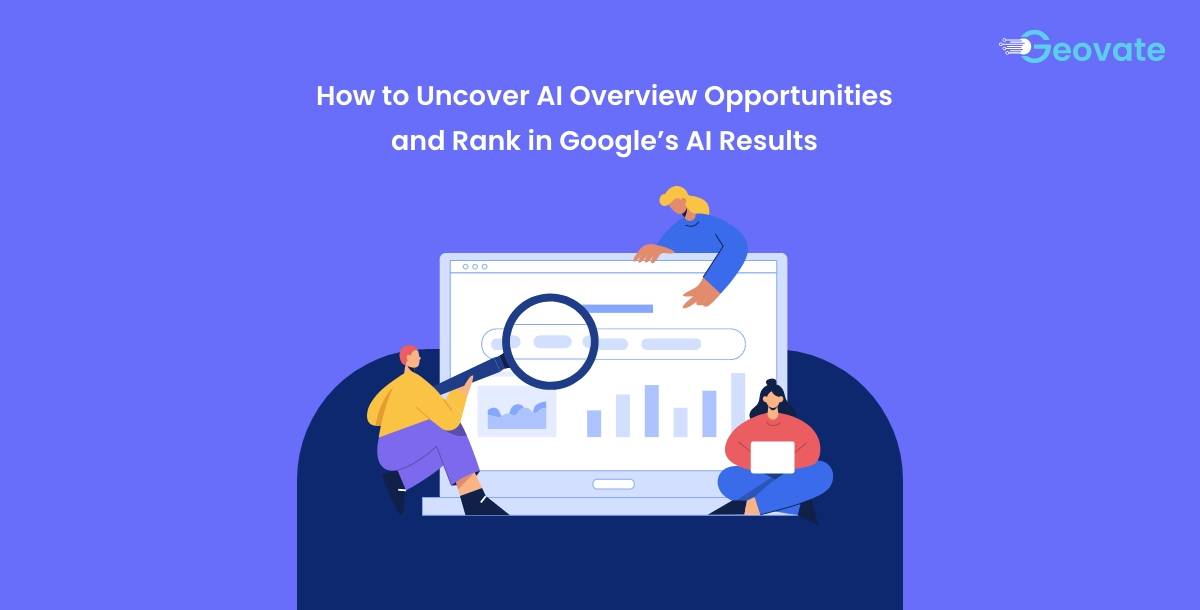How to Uncover AI Overview Opportunities and Rank in Google’s AI Results
Fri,12 Sep 2025 16:30:00- Font Size
- Share Content

Why should you learn how to rank on Google AI Overview?
Ranking on Google AI Overview is critical because it places your brand directly in front of searchers, even above traditional organic results. Appearing in AI Overviews improves visibility, builds authority, and drives higher click-through rates.
When you don’t appear in these summaries, competitors gain an edge even if you’re already on page one. By mastering how to rank in google ai overviews, you safeguard traffic and future-proof your SEO.
How can you turn on Google AI Overview data in SEO tools?
You can turn on google ai overview data in Ahrefs by applying a SERP feature filter. Go to Organic Keywords, select “Add filter,” then choose AI Overview.
From there:
- Narrow keyword positions to 2–10
- Apply filters to find opportunities
- Export your results for deeper analysis
This process highlights the exact keywords where AI Overviews appear but your brand is missing.
How can you find keywords where you should show up in Google AI Overviews?
The best way to find missed opportunities is by running a keyword gap analysis. Look for queries where you rank well but are excluded from the AI Overview box. If you’ve been wondering how to show up in Google AI Overviews, this process helps you uncover the exact keywords that matter most.
To prioritize effectively:
- Target high-volume search terms
- Focus on queries with commercial or transactional intent
- Compare with competitors already featured
This ensures your optimization efforts go toward the most impactful keywords.
How can you optimize content to appear in AI Overviews?
Optimizing for AI Overviews requires clear, structured, and machine-readable content. Google’s AI favors pages that provide direct, trustworthy answers. If you want to know how to appear in AI Overviews, the key is to structure your content in ways that AI systems can easily extract and summarize.
Best practices include:
- Write concise answers under question-based headings
- Use bullet points, numbered steps, and tables
- Add FAQ sections with schema markup
- Include topical entities and synonyms
- Strengthen authority with author bios and internal links
These techniques increase your chances of being cited in AI Overviews.
How can you track progress and rank in AI Overviews consistently?
Tracking progress ensures your optimizations are working and helps you stay competitive. You can measure results by monitoring SERPs, CTR, and traffic shifts.
Key steps include:
- Spot-check AI Overview inclusion
- Measure CTR changes for optimized keywords
- Track competitor presence in summaries
- Conduct quarterly AI Overview audits
By maintaining this routine, your brand stays visible and competitive in evolving AI-driven SERPs.
What is an example of closing the AI Overview gap?
Imagine ranking #3 for “best expense management software” but being excluded from the AI Overview. Competitors are gaining clicks while you miss out.
To fix this:
- Add a comparison table of software tools
- Define “expense management software” clearly
- Answer related questions like “how to rank on Google AI Overview.”
These adjustments improve relevance and increase the chance of being included in Google’s AI-generated summaries.
How does GEO and AEO help you rank in Google AI Overviews?
Generative Engine Optimization (GEO) and Answer Engine Optimization (AEO) are the future of search. They ensure your content is machine-friendly and trusted by AI engines.
- GEO: Optimizes content for generative platforms like ChatGPT and Google AI
- AEO: Structures answers so engines can easily extract them
Together, they position your brand to not only rank but dominate AI-driven results.
What checklist should you follow to show up in Google AI Overviews?
A clear checklist simplifies the process of ranking in AI Overviews. Each step builds on the last for consistent results.
Checklist:
- Run Ahrefs keyword reports filtered for AI Overview
- Focus on queries where you rank 2–10
- Update content with direct Q&A sections
- Use structured formats like FAQs and lists
- Recheck SERPs quarterly and refine
This repeatable workflow helps you stay visible inside Google’s AI summaries.
Frequently Asked Questions
Q1. How to rank on Google AI Overview?
Ranking on Google AI Overview requires creating content that is concise, structured, and optimized for machine understanding. Your goal is to provide answers that Google’s AI can easily extract, summarize, and trust. To achieve this, focus on using question-based headings, direct answers, and lists for scannability. Incorporate schema markup like FAQ or HowTo to guide search engines. Beyond formatting, build topical authority by covering related subtopics and linking internally. This combination improves your chance of being cited inside AI Overviews.
Q2. How to turn on Google AI Overview in search?
You don’t manually turn on Google AI Overviews for users; Google decides when they appear. However, you can turn on Google AI Overview data inside SEO tools like Ahrefs to identify opportunities. To do this, use the Organic Keywords report and filter SERP features to display “AI Overview.” Once filtered, you’ll see keywords where AI Overviews appear. By analyzing these, you’ll uncover gaps where you rank but don’t show up in summaries, guiding optimization efforts.
Q3. How to show up in Google AI Overviews consistently?
To show up in Google AI Overviews consistently, you must optimize for clarity, authority, and relevance. This means structuring your content so AI models can extract direct answers with confidence. Use concise language, bullet points, and short explanations under relevant questions. Support answers with topical depth, ensuring you cover related subtopics. Refresh content quarterly to stay competitive, and monitor SERPs to measure inclusion. Over time, these practices strengthen your reliability as a cited source in AI Overviews.
Q4. How to appear in AI Overviews with existing content?
You can make existing content appear in AI Overviews by refreshing and restructuring it. Start by identifying keywords where you already rank but don’t appear in summaries, then adjust your content accordingly. Add direct question-and-answer sections, include bullet lists, and apply FAQ schema to help AI models interpret your text. Update outdated sections, expand explanations with entities and synonyms, and strengthen internal linking. These tweaks turn underperforming articles into strong candidates for inclusion in Google’s AI Overviews.
Q5. How to rank in AI Overviews with GEO and AEO?
Ranking in AI Overviews with GEO and AEO requires adapting content for both generative and answer engines. Generative Engine Optimization (GEO) ensures your brand is cited in AI-driven summaries, while Answer Engine Optimization (AEO) makes your content extractable. To succeed, combine structured formatting with topical authority. Build content that not only answers questions but also demonstrates expertise, trust, and depth. Together, GEO and AEO give your brand a competitive edge in an AI-first search landscape.
